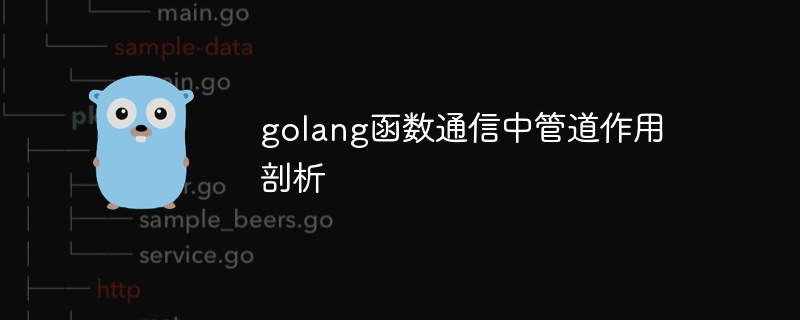
Pipeline is a concurrency mechanism that allows communication between Goroutines. They are collections of unbuffered or limited-buffered channels that can be used to parallelize processing tasks and increase application throughput. Details are as follows: Create a pipe: Use the make(chan T) function, where T is the data type to be transferred. Send data: Use the

Pipelines in Golang function communication
In Go, pipelines are a concurrency mechanism used for communication between functions. They are a collection of unbuffered or limited buffered channels that allow Goroutines to send and receive data between each other. Pipes provide higher throughput than channels and allow Goroutines to process tasks in parallel.
How to use pipes
To create a pipe, you can use the make(chan T) function, where T is the Type of data transferred. For example:
ch := make(chan int)
To send data to the pipe, you can use the <- operator:
go func() {
ch <- 42
}()To receive data from the pipe, you can use the <- operation Symbol:
data := <-ch
Pipeline example:
Consider an application that needs to calculate a large data set. We can use pipes to split the dataset into chunks and send them to the Goroutine pool. The Goroutine pool will process these chunks and return results, which will be piped back to the main Goroutine. This will allow Goroutines to process data in parallel, thereby increasing the throughput of your application.
Code example:
package main
import (
"fmt"
"sync"
)
func main() {
// 创建管道
ch := make(chan int)
// 创建 Goroutine 池
var wg sync.WaitGroup
for i := 0; i < 5; i++ {
wg.Add(1)
go func(i int) {
defer wg.Done()
// 从管道接收块
data := <-ch
// 处理块
result := data * data
// 将结果发送回管道
ch <- result
}(i)
}
// 向管道发送块
for i := 0; i < 10; i++ {
ch <- i
}
// 关闭管道
close(ch)
// 等待 Goroutine 池完成处理
wg.Wait()
// 从管道接收结果
for result := range ch {
fmt.Println(result)
}
}Unbuffered and limited buffered pipes
Unbuffered pipes are transient and data can only Transmission occurs when both the sender and receiver are ready. Bounded buffered pipes can store a certain amount of data, allowing the sender to send data before the receiver is ready. Unbuffered pipes have higher communication throughput, while limited buffered pipes can buffer bursts of communication and prevent data loss.
The above is the detailed content of Analysis of the role of pipelines in golang function communication. For more information, please follow other related articles on the PHP Chinese website!




